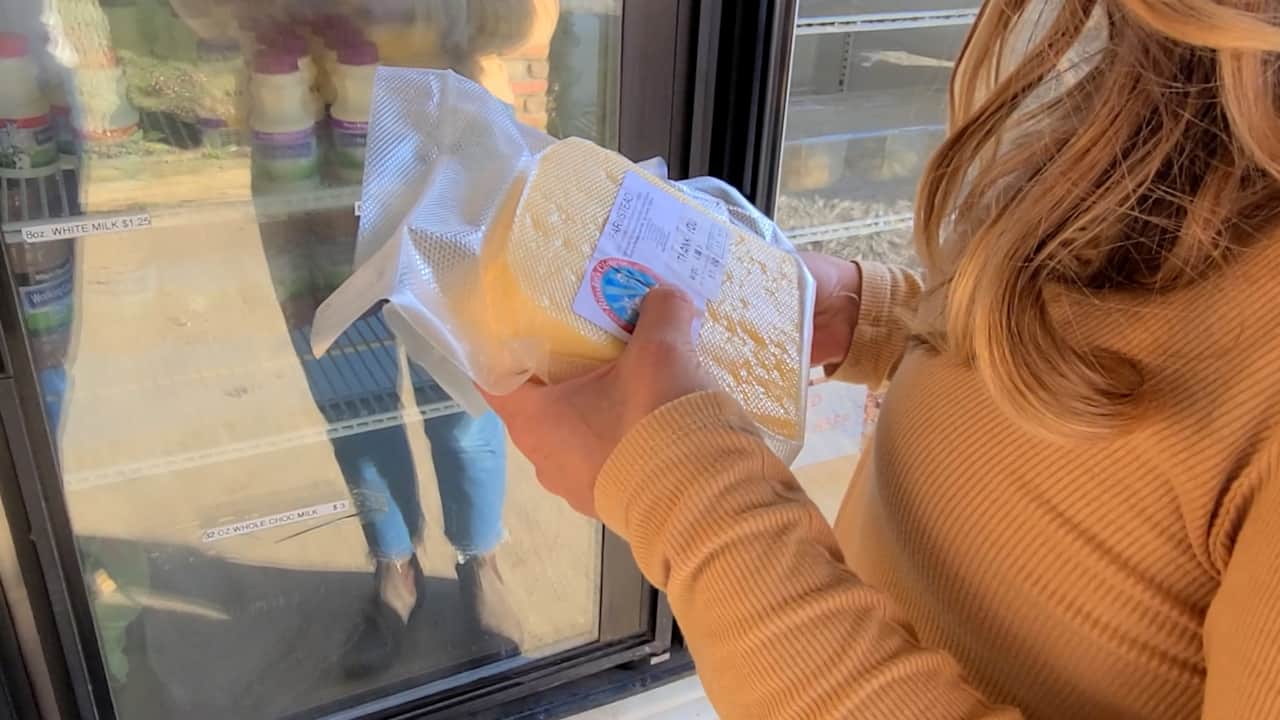How to Source Local Food In Your State: Finding Local Beef, Beer, and Dairy
Why Source Local Food?
Why source local when the ultimate goal of a homestead is to be fully self-sufficient and to grow or raise all of your food yourself? Many of us simply don’t have the means, space, or even desire to do that. Homesteading can look different for everyone. I personally live in military housing, so I won’t be raising cows anytime soon!
We can make our homestead the best we can by finding the best sources for everything we consume. Sourcing local is the best way to reach our homesteading goals for those things we simply cannot do ourselves.

Once you decide what you need to source, there are several reasons to source local food instead of buying everything from your local grocery store.
Sustainability
Most people already know this, but supporting local is better for the environment. Did you know that the there is an average of 1500 miles from farm to plate? This is pretty obvious, but transporting food great distances has a large carbon footprint from the emissions, refrigeration, chemicals and processing used to stabilize the food so it lasts longer. Yikes! If we just buy local we can cut out all of that waste.
Local Economy
Buying local keeps money in your local economy. Not only are you supporting the local farmers, workers, and transporters, but those local people are also going to spend those dollars back into your local economy when they shop and buy growing their business.
Taste
Food grown out of season or grown with the expectation of being transported a long distance may be grown with added chemicals or genetics to be more shelf stable. Even if there aren’t additives, the longer the food takes to get to you, the less fresh it will be. Shopping local gets the freshest food to you fastest, maintaining the delicious flavors and nutrients.
Price
Buying local can feel expensive if you are not already purchasing higher quality items from the grocery store. However, if you are purchasing organic and grass-fed food from the chain stores, it will be more expensive. When you buy local, you are often cutting out the middle man and costs of transportation and refrigeration. Not only that, but you can also buy local in bulk (buying larger quantities of meat and dairy at a time can save you big).
Is Sourcing Local Better than Buying Organic from a Grocery Store like Whole Foods or Aldi?

Well, it really depends. In general, organic is better for the environment than conventionally raised foods. However, it is not always eco-friendly in terms of transportation. Make sure when buy organic foods from the grocery store, you choose them in season so they are likely to have traveled less.
Local farms obviously win in terms of cutting out transportation, but they might not necessarily be organic (if they are, it’s a win-win!).
So is sourcing local better than buying organic? Well, it depends on your goals… Mainly whether you want to focus more on sustainability or health. This article goes into much greater detail on local versus organic. The conclusion: Your best bet is to try to find local AND organic, but if you cannot, choose what is best aligned with your personal homesteading goals.
How Do I Source Local Food?
If you are anything like me (a typical millennial gal), you might not like calling places. You would much rather check a website. Unfortunately, most of these local places tend to run things a little more old-school than that. You may have to get over social anxiety and simply ask around or call. Once you find one good source, they will likely lead you in the right direction of everything else you are looking for.
One of my goals this year is to source as much as I can locally. Today I am attempting to source local beef, beer, and dairy. Let me know in the comments if you are interested in watching what else I find.

Come Find Local Foods With Me!
Sourcing Local Beef

The main things we want to look for when buying meat are organic, grass-fed, non-GMO, and free range. These are mainly for health and environmental reasons, but that could be a WHOLE different blog post. Just trust me that this is the good stuff.
If you watched my video, you will see that I failed at beef sourcing on this particular day. I later found out that the store I was looking to purchase meat from is indeed local, but is conventionally raised.
In order to have better success, I can search my state on the Eat Wild website and it will show me the best options in my area. They have this available for all of the United States and Canada.
Buy Local Beef In Bulk
When you do find your source for local beef, shop in large quantities. Usually you can buy a quarter or half a cow and freeze it to have meat for the whole year! Not only will this save you time and hassle of having to go to the farm so often, but it can be a lot cheaper to buy in bulk.
Buying this way also gives you the option to get cuts of meat you cannot get from the store. You can get more creative with cooking this way. You can also get bones to create delicious and nutrient dense bone broth.
Sourcing Local Beer

Sourcing beer was not on my to-do list right away this year, but our local craft beer store really caught our eye on this particular day.
You want to buy local beer for the same reasons as other food: it is more sustainable due to transportation, and it is good for the local community.
I have another post all about choosing better alcohol options if you are interested to learn more. Local craft beer is going to be your best option when looking for sustainable alcohol with quality ingredients.
Sourcing Local Dairy

As you will see in the video, this venture was by far my most successful find. I actually found out about this source from two friends (ugh.. from talking to other people… I know, I know…).
When looking for the best milk, most people claim raw milk is the way to go. Raw milk is straight from the cow, no pasteurization or homogenization whatsoever. In order to drink this safely, you have to know that the cows have no diseases and are extremely well taken care of. Another issue is that raw milk is actually illegal to sell in many states. To find out if raw milk legal in your state, heal over to the map on Realmilk.org.
Of course, you can drink raw milk from your own cows or you can herd share (where you own a cow or part of a cow and are then entitled to its milk). I am not this far along on my journey yet. I still want this to be easy. Also, some people may not feel safe drinking raw milk, and that’s totally okay too.
If I can’t get raw milk, what should I buy?
The next best thing to raw milk is grass-fed, low temperature pasteurized, non-homogenized milk.
Regular pasteurization can kill off bacteria, but it can also kill the healthy bacteria that we want to consume. Homogenization makes the milk smooth and silky to drink, instead of the cream separating at the top, but can also take out some of the good fats.
Basically, we want our milk to be as least processed as possible.
In Case You are Local to Southeastern Alabama…
I truly believe that the dairy farm I found is such a gem that I wanted to share a little but more information in case you are in the area.

Working Cows Dairy is “one of only a few of dairies in North America that are truly 100% grass fed, Animal Welfare Approved and USDA Organic.” The milk is processed the least amount as possible (low temperature pasteurized, cream on top, and no additives). Working Cows even practices regenerative farming. They have a drive up refrigerator where you pick up your milk and cheese and pay in the box through the honor system (now that’s country!). I am in love and can’t wait to go back! If you go during milking hours you can see how it’s done and even join in.
I Challenge You To Source Local
Since a lot of us can’t do it all on the homestead, sourcing local can give us what we need: healthier, more sustainable, and more delicious food as close to it’s original state as possible. I still have a long way to go in my sourcing journey, but each step I take gets me closer to the roots of my food for true from-scratch living.








Wow I needed this article! Thank you!